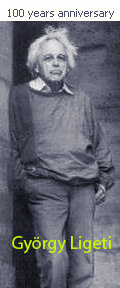

Art sense Polymorphism in Art Rasas and Islamic Aesthetics Play and Symbolism Abstraction and Surreaslism |
Humanism Helen Keller Ideals The symbol Che Four Signs for All Times |
Schemata Instructions On How To Put On A Shirt |
Obsessions A rare and strage being El poder es más fuerte War |
Enigms Draculae The Diabolical Tritone Murder The sky |
Biophere Usableness A harsh economy Epigenetic |
A rare and strange being
The essence of fox hunting is one and the same as bullfighting: there is pleasure
to be satisfied and there is a living being that has to die.
One of the few living beings that kill others of the same species, without its purpose
being to improve its chances of survival and obtain the other's biological fuel, is
the human being.
One of the rare cases where a living being eliminates another without its purpose being to obtain the other's
biological fuel by killing it, is the human being.
During the act of destruction of another being, in the case of humans sometimes at least, pleasure is obtained
by the process of its mutilation. This pleasure is related to the gratification of the act, which otherwise
does not satisfy the principle where the gratification of play is intended to teach about the individual's
environment and the formation of a mental framework to aid survival.
This destruction occurs sometimes in the context of a discipline recognised as art: gastronomy.
Even stranger is the case of living beings that feel great pleasure in harassing and deceiving another living
being. Again it is the human being, for example, when he engages in the "sport of fishing" This "entertainment"
(nobody and nothing is forcing him, except for his ludic urge), involves hooking a fish, shattering its jaw,
observing it, sensing a pleasure that he was able to capture it and then bizarrely returning it to the water
immediately, on the pretense that he is being generous.
There is no need to carry out any experiments to know that being pierced with a hook would produce horrible
pain. Let us imagine that we are very hungry as we walk across a field by a river and then suddenly we
discover an apple on a tree. We then urgently pick the apple, and as we take a bite, a sharp piece of metal
becomes embedded in our gums. Then we are shaken roughly and then submerged into the water. Unable to
breathe properly and terrified, we then feel the metal shard being removed and as we about to pass out, we
are calmly laid out on the shore.
Then as we run away from the water, with our jaw in great pain, it hardly seems likely that we would go on
to exclaim "Well that was a bit of a prank really but how generous to let me go, I really thought I was
going to be killed!"
Like fishing for sport, the essence of fox hunting is one and the same as bullfighting: there is pleasure to
be satisfied and there is a living being that has to die.
One of the few living beings that kill others of the same species, without its purpose being to improve its
chances of survival and obtain the other's biological fuel, is the human being.
Unfortunately for our ego, these strange and harmful actions have become associated with art.
For the fly fisherman, this torture to the fish is an art, as it is for the bullfighter when he or she
reaches the climax of the performance that usually involves the death of the bull. Humans satisfy their
need to achieve a psychological balance, through self-fulfillment, precision, risk, genetical prowess,
and power, the same as in any artistic activity. For Picasso, his painting "Guernica" was achieved using
brushes and oil and a virtuoso technique.
For the fisherman, these psychological needs are met with hooks, line, rods, and a virtuoso technique.
For the bullfighter they are met with risk, the cape, sword and a virtuoso technique. In all these cases,
the purpose is to satisfy the aesthetic pleasure of the human being who is the active participant, and
that of the observer.
At the end there is usually a living being that is hurt. Fortunately this is not the case with art.
An elephant walks in grassland and steps on a rock. Under the rock there is a frog, or something similar,
which dies as it is crushed. This is an involuntary act and belongs to the random characteristics of
nature. There is a naturally determined probability of the frog actually living to complete its life
cycle. But a being who seeks another, tricks it into a trap and then takes its life, is a willful act
and very specific to human beings: the ambush, the cheating, and the deceit. Then a cunning study of the
victim is carried out in order to learn that its nervous system has programmed genetic reactions that
are always repeated in the same way. By this means humans can then decipher its behaviour and use this
information to subjugate it.
There is an irrational but natural and sometimes dangerous impulse to participate in play as a means
to gain knowledge.
The paradox is that humans, with their complex level of knowledge, have to judge what is safe, like
any other being, but unfortunately, their version of play is much more complex and can be destructive
to other humans or other beings.
Art is one of the safer ways of experiencing aesthetic pleasure.
Other ways, I think have a tendency to be harmful.
|
||
© Jaime A. Maldonado
All right reserved
|
||


![]()
All right reserved - 2015